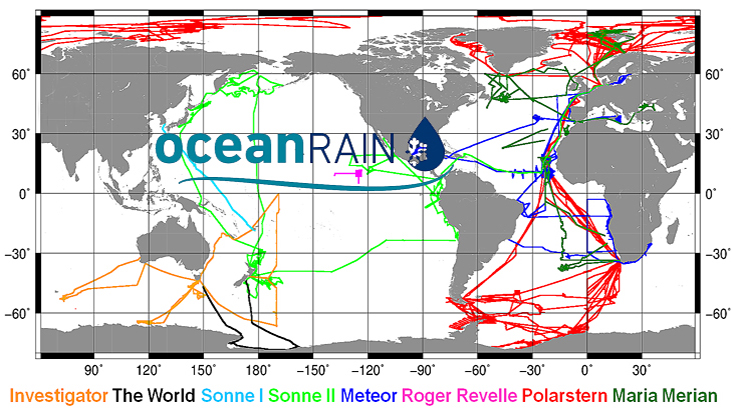OceanRAIN project collects unique data on precipitation over the world’s oceans
9 July 2018, by CEN Universität Hamburg

Photo: UHH/CEN/C.Klepp
At least two thirds of the Earth’s surface is covered by ocean: 360 million square kilometers where, whether there is a lingering drizzle or sudden cloudburst, not a soul would be there to observe it. Until now, such events were only recorded by satellites, and the accuracy of this data couldn’t be verified by in-situ shipboard measurements. In his research project OceanRAIN, Dr. Christian Klepp from the Center for Earth System Research and Sustainability (CEN) is filling this gap in our knowledge on the global ocean water cycle. His findings have now been published in Nature’s Scientific Data.
Over the past seven years, Christian Klepp has installed specially developed devices on board eight research ships to record the along-track precipitation. To date, the devices have gathered more than 6.8 million individual measurements, which were also used to calculate evaporation. The difference between the two values (precipitation and evaporation) tells us how much water evaporates from the oceans and how falls back into them – an important parameters for climate models.
In the past, these models used data from satellites. However, Christian Klepp’s dataset allows for the first time to verify and calibrate this satellite-based information; e.g. that provided by NASA’s Earth observation satellite program Global Precipitation Measurement (GPM).
Fundamentally speaking, information on the global water cycle is important for two reasons: On the one hand, many researchers believe that climate change will change the amount, spatial distribution patterns, and extremes of precipitation. Accurate measurements can help us to verify this theory.
On the other hand, understanding the links between precipitation and vertical air motion yields insights into how local and global air circulation interact. This interaction is likely to have a significant influence on climate sensitivity; in other words how much increased CO2 levels in the atmosphere affect the temperature at the Earth’s surface.
Researchers can access OceanRAIN data online via the ICDC (Integrated Climate Data Center) and the WDCC (World Data Center for Climate).
Link to article: https://www.nature.com/articles/sdata2018122


